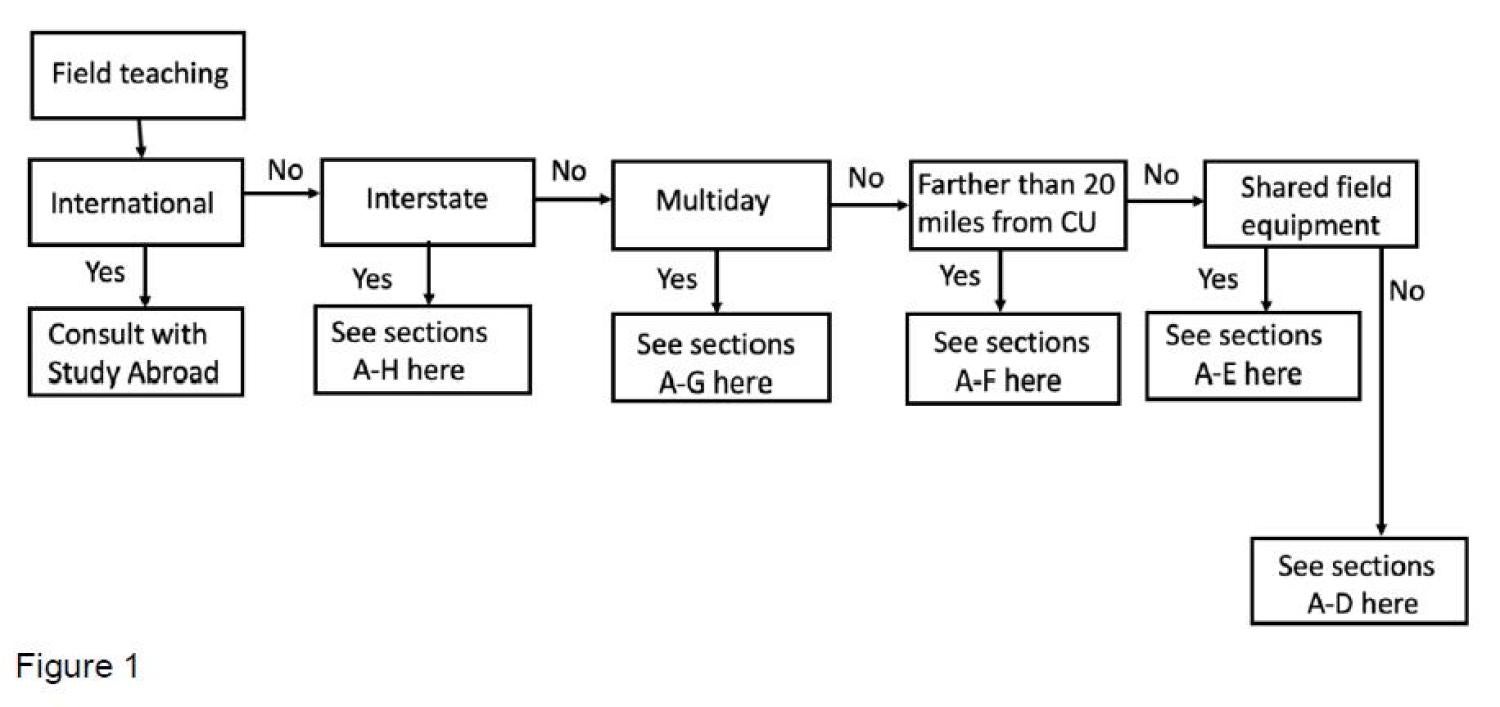Observations About and Suggested Approaches to Field Teaching During the Pandemic
University of Colorado Boulder College of Arts and Sciences Field Teaching Subcommittee: Lon Abbott, Geological Sciences (GEOL); Doug Bamforth, Anthropology (ANTH); Kevin Mahan, Geological Sciences (GEOL); Noah Molotch, Geography (GEOG); Martha Russo, Art and Art History (AAH); and Erin Tripp, Ecology and Evolutionary Biology (EBIO)
Disclaimer: The following should not be considered an endorsement of any decisions made by the University administration regarding the timing and nature of on-site instruction at the University of Colorado during the COVID-19 pandemic. This document was prepared on Friday, June 5, 2020 and does not reflect public health information or direction from the University made available after this date.
Purpose
Our sub-committee was asked to provide suggestions on how to safely return to in-person field teaching during the age of COVID-19, regardless of how long the pandemic might last. Understandably, ever since Chancellor DeStefano released his Road Map to Fall 2020, attention has focused on what Fall 2020 in-person teaching will look like. The Chancellor's Road Map and the subsequent guidance we received from the Academic Instruction Implementation Team on June 1, 2020 both outline the goals and guiding principles that underpin CU Boulder's partial return in the fall to in-person teaching, if and when local, state, and national conditions permit such a return. The Road Map acknowledges the dynamic tension that exists between the paramount value of keeping all members of our community healthy and safe, which is most easily accomplished by emphasizing online instruction, and the need to carry out our mission as a comprehensive teaching and research institution that serves the public good, which is best served when at least some instruction occurs in person.
The Implementation Team highlighted the critical importance to student success of in-person instruction for field classes. In recognition of the vital role in-person instruction plays in Arts and Science's field curriculum, the College of Arts and Sciences Dean James White and Associate Dean Lang Farmer asked our subcommittee to:
- provide suggestions for ways to successfully approach field teaching in the time of coronavirus
- highlight particular challenges that field instructors face in these circumstances
- identify critical information and resources we need to receive from campus administrators in order to safely and effectively carry out our field teaching mission.
All of our suggestions below assume, as the Chancellor's Road Map makes clear, that in-person instruction will occur in strict accordance with local, state, and national health regulations and guidelines. We recognize that field situations vary; each field class has different objectives and faces unique challenges. The suggestions that follow are in no way intended to be comprehensive or meant as prescriptions. They are offered as one vehicle to stimulate creative thinking by individual instructors and foster dialog between practitioners, which is where great ideas are born. The challenges and demands of field teaching bear a strong resemblance to those of field research; we have thus borrowed from the work of the Return To Research Committee chaired by Waleed Abdalati. That committee explored many of the issues discussed here long before our committee was even constituted. We direct interested readers to their report for more detailed discussions of several topics. It and many other resources are listed in the 'Resources' section at the end of this report.
Organization
There are many different ways to organize the types of issues one must consider in order to safely teach in the field during the pandemic. We have chosen as an organizational theme the duration and the distance from campus of a given field experience because the number and complexity of considerations increase as duration, distance, and volume of human interactions increase.
Figure 1 illustrates this organizational structure. The text begins with discussions of universal considerations that apply to all field classes and progressively broadens its scope to touch on issues faced only by classes that operate in more complex field situations. Our hope is that this structure will allow a given instructor to efficiently find the portion of this document that addresses the subset of issues most relevant to her or his specific field course. Those issues that cannot be adequately addressed without information and/or resources provided by campus administrators are bolded and italicized.



